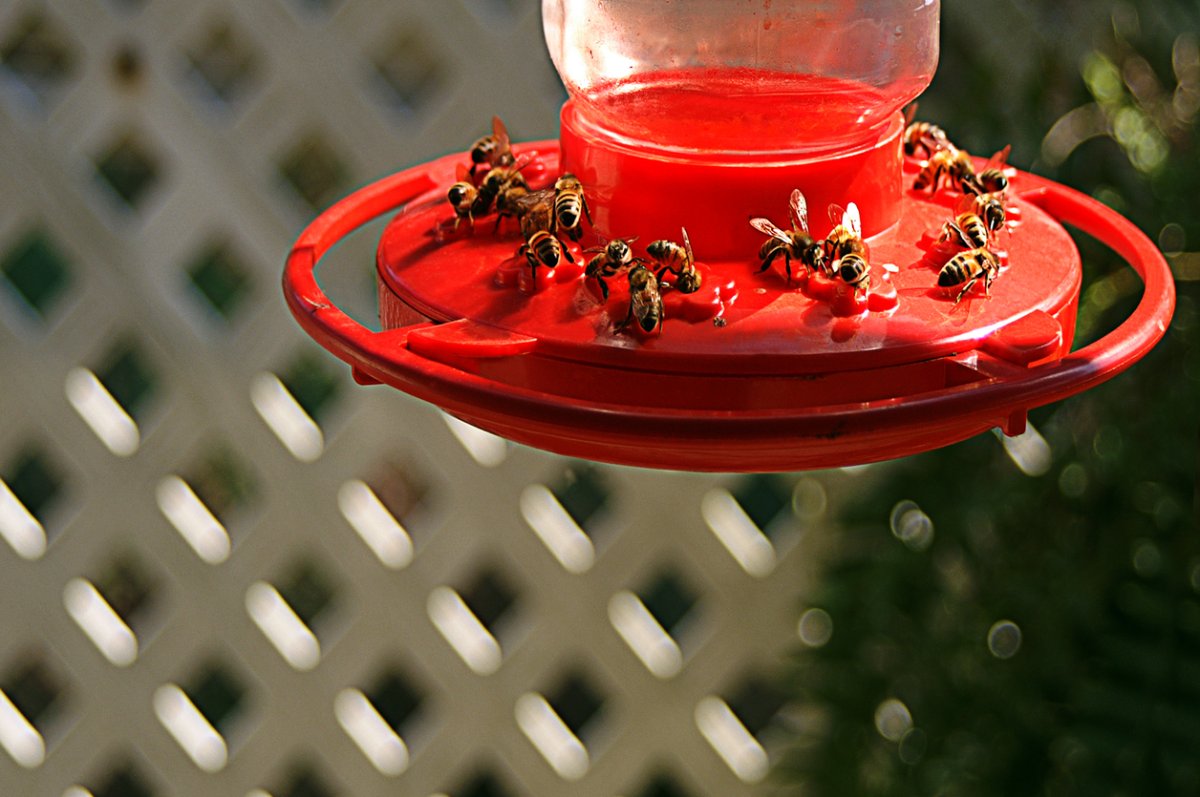

We may earn revenue from the products available on this page and participate in affiliate programs. Learn More ›
There’s an abundance of information available about how to attract hummingbirds to your yard and feeders, but information about how to keep bees away from hummingbird feeders tends to be scarce.
The dozen or so species of hummingbirds found in North America gravitate to a variety of colorful garden flowers, such as lantana, bee balm, foxglove, salvias, lupine, flowering tobacco, petunias, and zinnias, as well as the high-calorie, easy-to-make sugary nectar in hummingbird feeders. Unfortunately, these also attract bees and other insects.
While bees are pollinators like hummingbirds, bees are unwanted guests at hummingbird feeders. So, too, are wasps and ants. Too many unwelcome guests at the feeder can contaminate the sugar water, which deters hummingbirds from returning. A swarm of bees on a hummingbird feeder can lead to overcrowding, leaving little room for those hummingbirds still interested in the nectar.
1. Hang a saucer-style feeder.
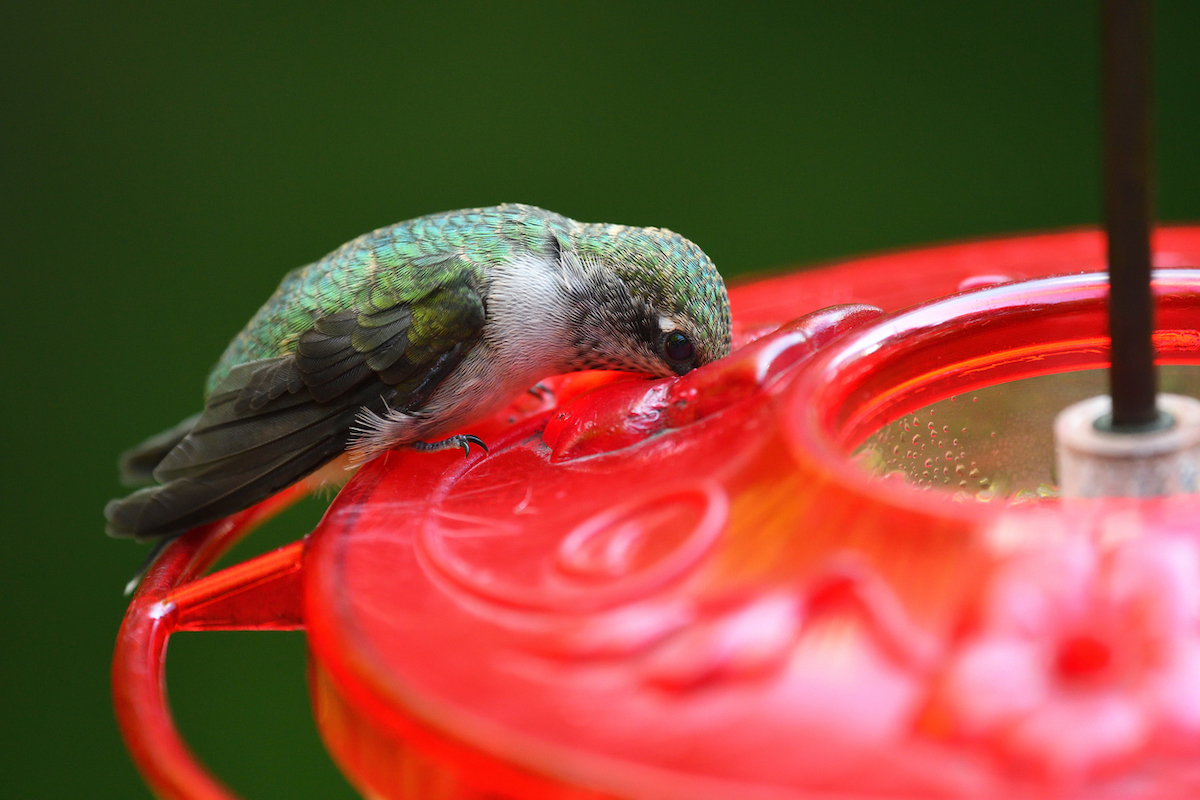
Whether you make your own or buy a premade hummingbird nectar, the same food source that attracts hummingbirds also attracts bees and wasps. The hummingbirds may feed next to a few bees, but large numbers of bees can be detrimental to the hummingbirds—and wasps can become aggressive, chasing off the tiny birds who leave in search of another food source.
If bees and other insects are rampant in your yard, choose a feeder that is less “insect-friendly,” such as Feed Garden’s saucer-style hummingbird feeder, which is accessible to long hummingbird tongues but harder for insects to access. Bonus: Saucer-type feeders drip less than the typical inverted hummingbird feeder, making less mess and attracting fewer ants.
2. Make sure the feeder has bee guards.

There are approximately 4,000 varieties of bees in North America, many of which like nectar and are attracted to hummingbird feeders. To discourage them from drinking up all the sweet nectar in your hummingbird feeder, add bee guards to your hummingbird feeders. Bee guards, like these yellow flower-shaped bee guards, create enough space between the food source and the access port to keep bees from reaching the “juice” while allowing the hummingbirds to drink at will. Many of these guards fitted onto existing feeders and are easily replaceable when they wear out.
RELATED: 23 Types of Hummingbirds All Backyard Birdwatchers Should Know
3. Buy red hummingbird feeders, but forgo the red nectar.
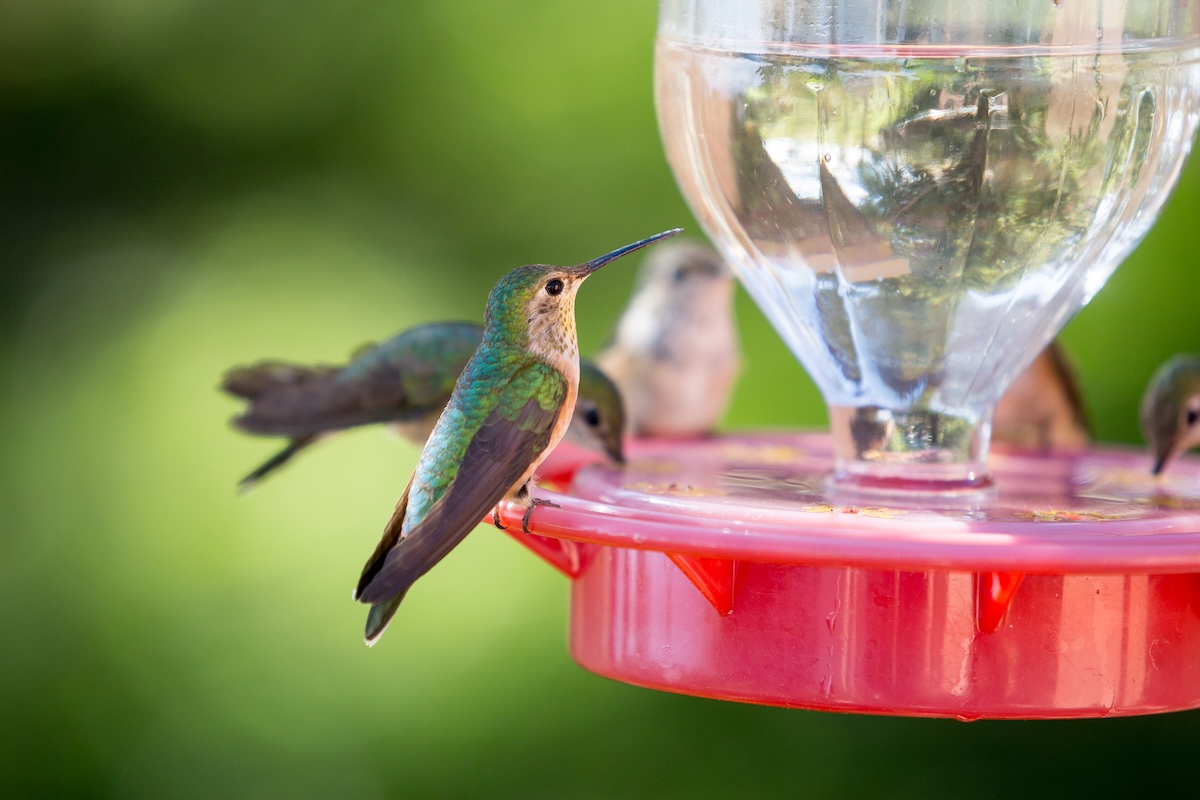
If you want a wasp-proof hummingbird feeder, make sure it’s red. Red is the color that most attracts hummingbirds. Wasps (and bees) aren’t as attracted to red as hummingbirds, are; the insects actually prefer yellow.
There is no need to color the sugar water red, however. Red dye is not necessary to hummingbirds’ diets—the additive can actually harm the birds—so there’s no reason to add it.
4. Move the feeder to a new location.

Moving a hummingbird feeder around can confuse bees, who might struggle to find it in its new spot. Insects prefer convenience and are less likely to search out the new location.
If there’s no good place for you to move your feeder, another option worth trying is to take the feeder down for a couple days and hope that the bees will forget about it. Don’t move the feeder too often, though—you might also confuse the hummingbirds.
5. Look for leaks.
Leaks and drips attract bees, ants, and other insects to flock to hummingbird feeders. Make sure that the seal between the reservoir and feeding ports is properly aligned and tight to prevent leaks. Take care, too, not to overfill a hummingbird feeder to the point that it leaks.
6. Divert the bees’ attention.
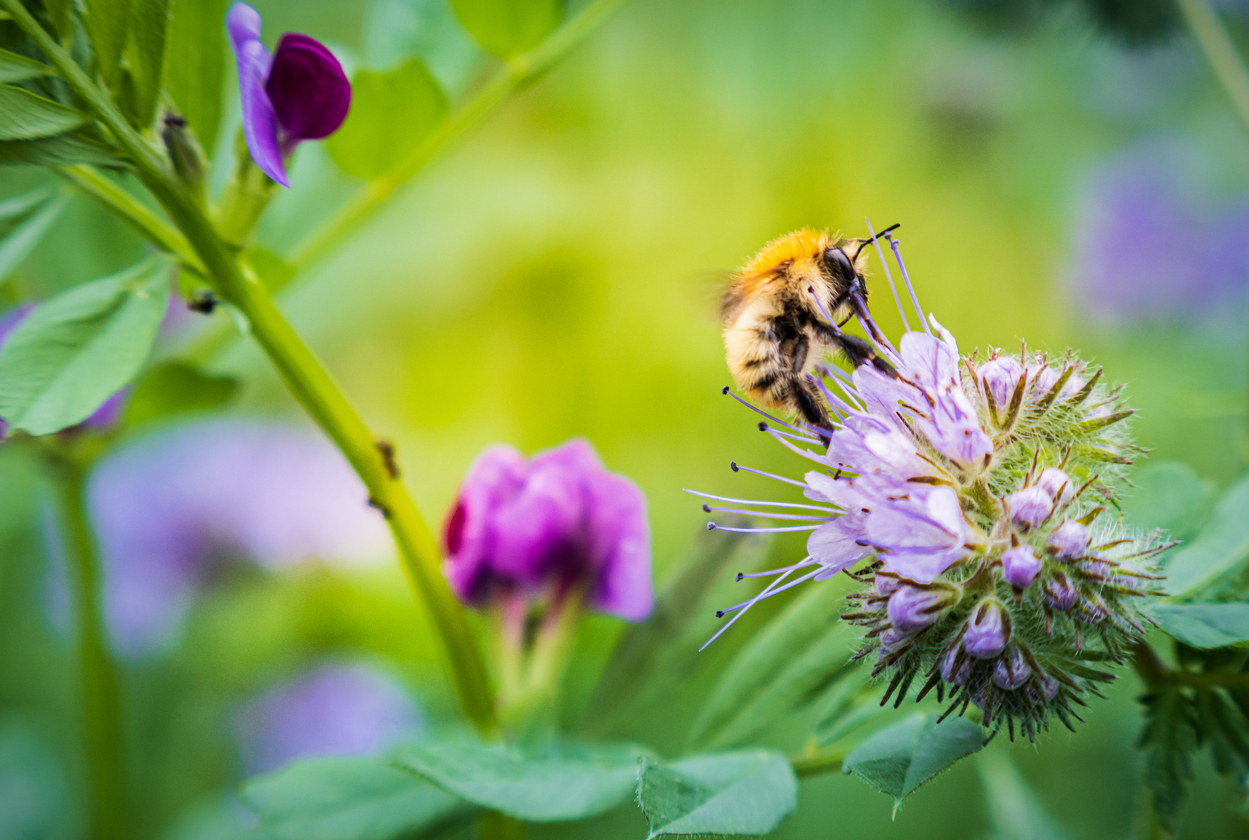
Plant a pollinator garden to attract bees. If they have a smorgasbord of floral selections, they are more likely to stay away from the hummingbird feeder. For season-long feeding, plant a mixture of perennials and annuals with staggered bloom times.
7. Dilute the nectar in your hummingbird feeder.
Bees love sugar and will choose the sweetest flowers and nectar available. Reducing the sweetness of the nectar in your feeder might encourage the insects to move on and find sweeter food elsewhere.
Bees and wasps prefer a water-to-sugar ratio of 3:1 or 4:1. Diluting the ratio of the nectar in the hummingbird feeder to 5:1 will still attract the little birds, but might send bees and wasps in search of other sweet sources.
8. Deploy decoy feeders.
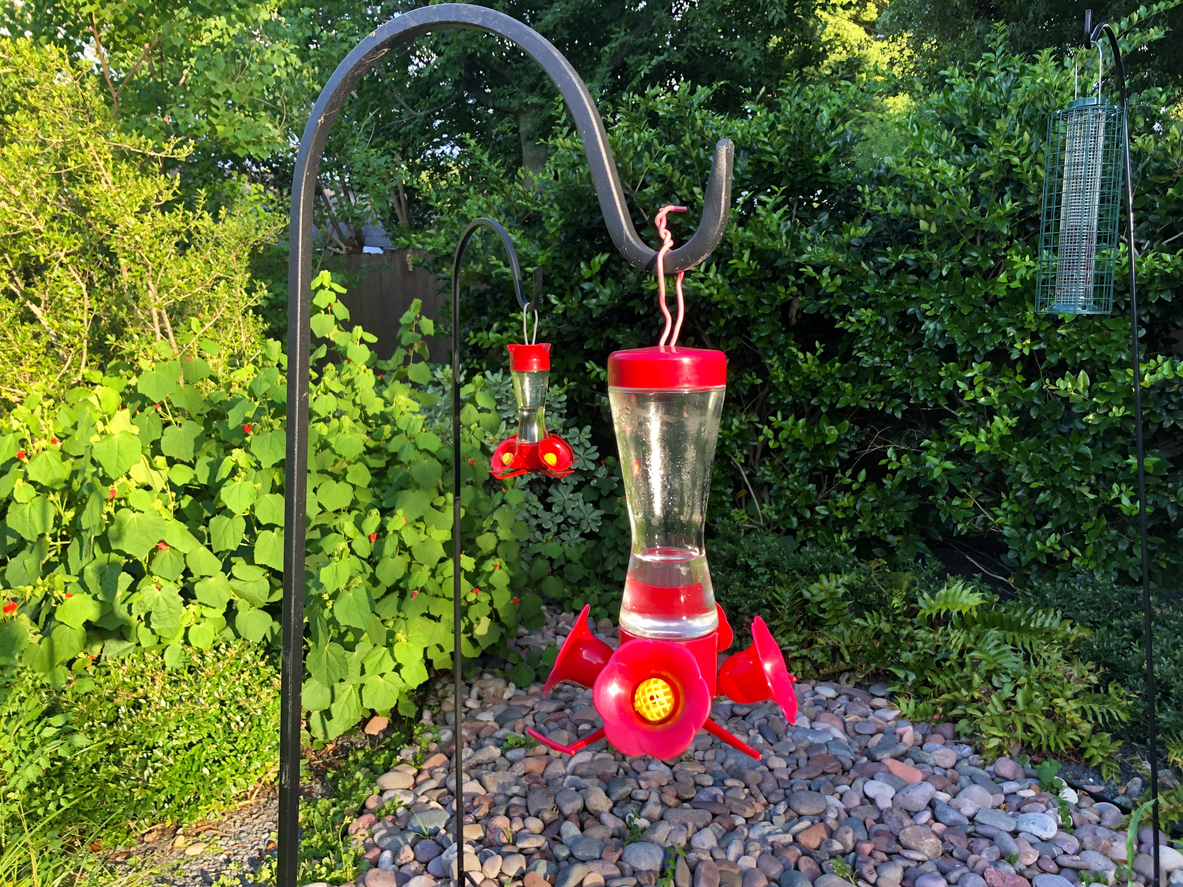
If you can’t plant lots of flowers, add a bee-specific feeder—or just a shallow bowl—with a higher water-to-sugar ratio to lure bees and wasps away from the hummingbird feeder. Remember to make the sugary solution stronger than the 5:1 ratio satisfactory to hummingbirds.
Start by locating the decoy feeder near the hummingbird feeder, and gradually move it 5 to 6 feet away. Place the distracting feeder in full sun, which bees prefer more than hummingbirds do, and make it easily accessible.
9. Clean hummingbird feeders frequently.
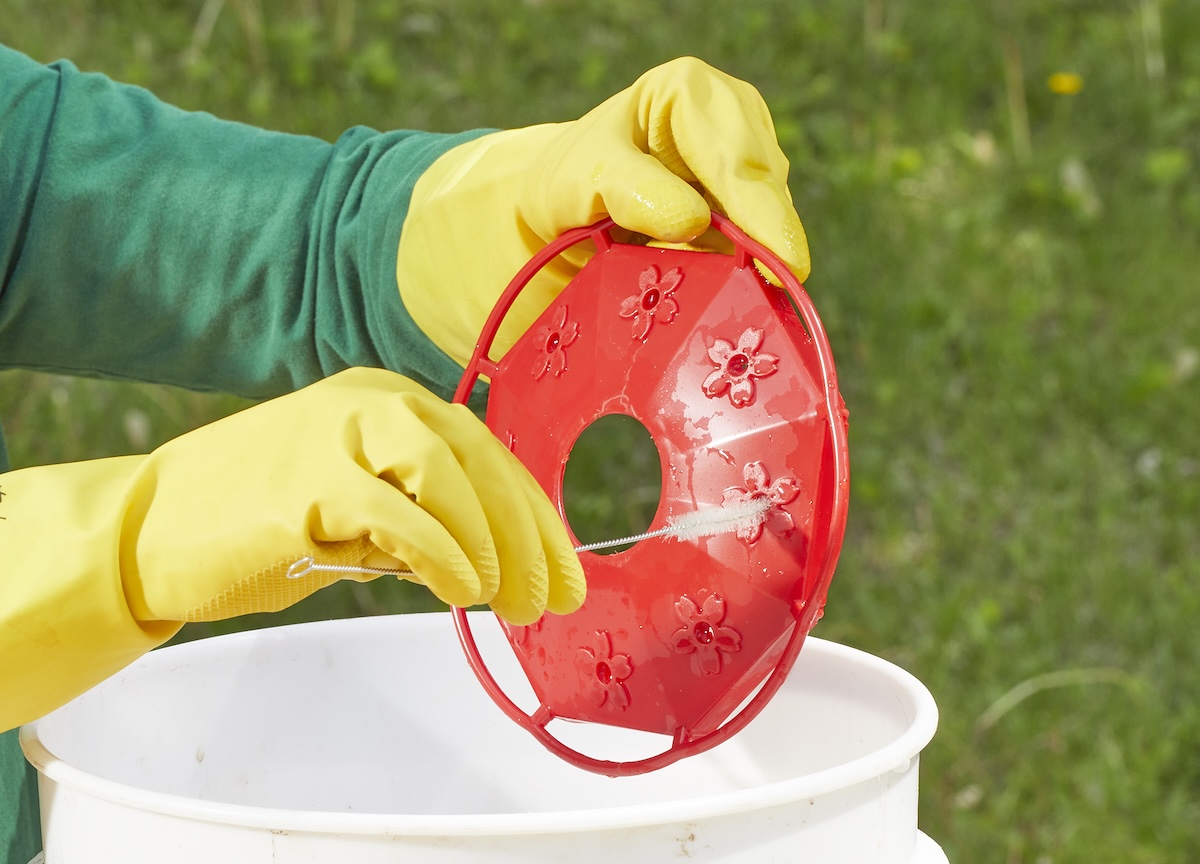
Regularly cleaning hummingbird feeders minimizes spilled nectar that attracts bees, wasps, ants, and other insects. It also reduces the likelihood of the nectar spoiling and harming the hummingbirds.
To keep nectar from spoiling quickly, move the feeder to a partially shaded area. A shady spot will slow fermentation and leaks. It will also make the feeder less alluring to bees, who prefer to feed in sunlight.
10. Never use harmful substances on or near the feeders.
Bearing in mind the delicate nature of hummingbirds and the fact that bees are also important pollinators that really shouldn’t be killed, it’s best to avoid the use of pesticides near hummingbird feeders.
Similarly, don’t use any kind of oil, spray, or petroleum jelly on the feeder. If any of these substances stick to the hummingbirds’ wings, they could have difficulty flying. If a gummy substance gets stuck on a hummingbird’s beak, the bird may not be able to open its mouth.
Whatever you do, don’t use any kind of tape on a feeder, as a hummingbird could get stuck to the adhesive and not be able to fly away.
